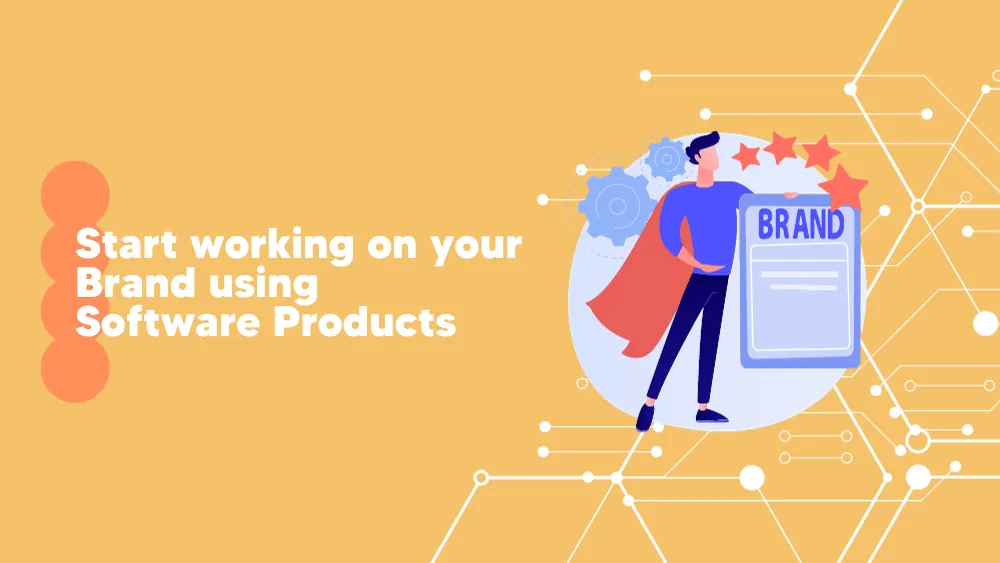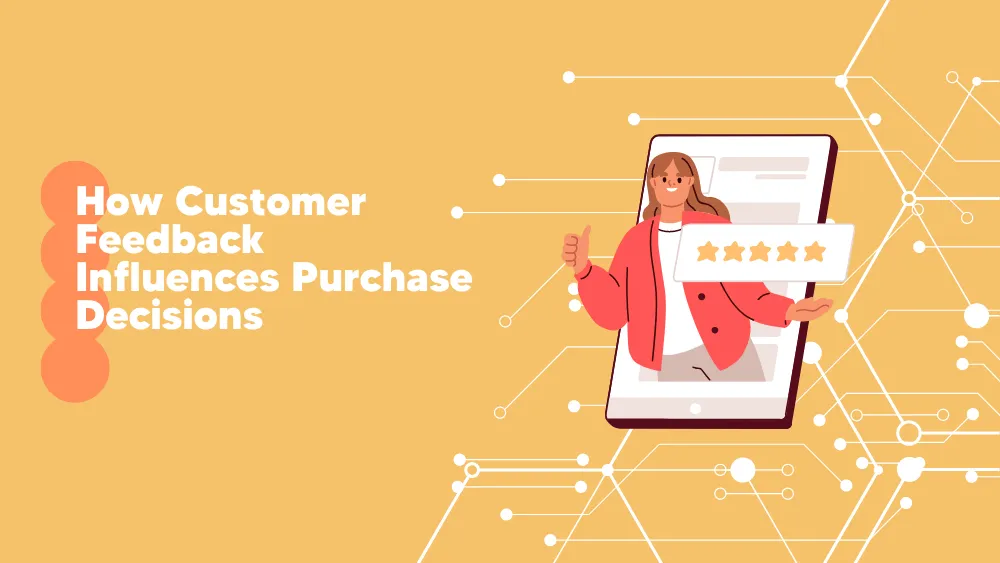Table of Contents
Take a moment and imagine yourself in a situation – you’re shopping, standing in an aisle, and staring at two similar products from two different brands. One of them you recognize, the other, not so much. More often than not, you’ll pick a product from a brand that’s already familiar to you. This preference, this pull towards a brand, is a manifestation of brand equity.
But here’s the thing–brand equity is not just about recognition—it’s about perceived value. It’s what makes customers willing to pay a premium for your product over another, seemingly identical one. It turns your brand from being just another name into a trusted choice for customers. In the sections to come, we will break down the ins and outs of brand equity, the importance it holds in your business, and how you can cultivate it.
What is Brand Equity?
Brand equity, as a term, might sound like a single, monolithic entity, but it’s actually composed of four significant components.
Brand Awareness
Brand Awareness is the degree to which your brand is recognized by potential customers. It’s a simple measure of how well-known it is. If your brand is widely recognized, it means you’ve got a high level of brand awareness which acts as the first touchpoint for customers, making them familiar with your existence in the market.
Brand Associations
Next, we move on to Brand Associations. This refers to all the aspects that consumers connect with your brand. This connection could be emotional (how it makes them feel), functional (what the brand allows them to do), or even symbolic (what it represents). It’s these associations that help shape your brand’s image in the consumer’s mind.
Perceived Quality
The third component is Perceived Quality. This is all about how a consumer evaluates the overall quality or superiority of your product or service. Their perception will impact whether they see your product as a valuable proposition or not. It’s this perceived quality that can make a customer choose your product over a similar one from a competitor.
Brand Loyalty
Lastly, we have Brand Loyalty. This isn’t just about making a customer buy your product once. It’s about creating a bond so strong that the customer chooses your brand every single time, even when there are other options. This loyalty represents a stable customer base that is more likely to stick with your brand over time.
The Importance of Brand Equity for Business
So, we’ve got our heads wrapped around what brand equity is and its main components. Now let’s get to the heart of the matter—why does brand equity matter so much?
- Customer Loyalty – Brand equity and customer loyalty are like two peas in a pod. You see, when your brand equity is strong—when people know your brand, associate good things with it, and believe in its quality—customers stick to you like glue. They don’t just buy from you; they keep coming back for more. This cycle of brand equity driving customer loyalty, which in turn boosts brand equity, is the beautiful circle of business life.
- Stand Out or Bow Out – In today’s hyper-competitive business world, differentiation is no longer an option; it’s a necessity. How do you stand out in a crowd? That’s right, brand equity. The stronger your brand equity, the more unique and recognizable you become. When your brand rings familiar and triggers positive feelings, customers are more likely to choose you over your competitors.
- Price Tag Power – Here’s something exciting—brand equity can flex its muscles in your pricing strategy. High brand equity means customers perceive your offerings as high quality, and guess what? They’re willing to shell out more for it. Not only does this mean you enjoy higher profit margins, but it also cements your place in the market as a superior provider.
- Building Trust – Lastly, brand equity is like your brand’s invisible trust badge. When customers have a positive association with your brand, trust blossoms. This trust often leads them to choose you over a competitor, and that’s a win. Trust is like gold in business. You’ve got to earn it, and once you do, it’s priceless.
How to Build Brand Equity
Now that we’ve dissected the “what” and “why” of brand equity, it’s time to roll up our sleeves and tackle the “how.”
-
Be Memorable, Be Strong
To stand out, your brand needs to be memorable. It’s important to choose a name and logo that are easy to remember and associate with positive values or experiences. The goal is to have a brand that people remember and think of positively. Think about Nike. Their ‘Swoosh’ logo and ‘Just Do It’ slogan are simple, yet powerful. They’re easy to remember and have positive associations—motivation, determination, and athletic excellence. This level of memorability and positive association is what you should aim for.
-
Consistency is Key
One rule you can’t break—be consistent. You can’t be great today and just good tomorrow. Consistency is what builds trust in your brand, and trust is what solidifies your brand equity. Keep your quality steady, and you’ll have customers coming back for more.
-
Show Your Unique Colors
To make your mark in the business world, you need a unique and compelling value proposition. What makes you different? Why should customers choose you over your competitors? These questions need to be answered effectively to build and enhance your brand equity. Consider how Apple positions itself. They’re not just another tech company; they’re a company that ‘Thinks Different.’ This unique positioning sets them apart from competitors and adds immense value to their brand equity. Identify what sets your brand apart and highlight that in your value proposition.
-
Talk, Engage, Repeat
Engaging with customers isn’t just about sending them emails or posting on social media. It’s about creating a dialogue, an exchange of ideas, and a relationship. Effective marketing and communication strategies can help you achieve this. Listen to your customers, understand their needs, respond to their feedback, and communicate clearly and honestly.
-
The Customer Experience Mantra
Last but certainly not least, you need to ensure positive customer experiences to build loyalty. It’s not just about making a sale; it’s about the journey you provide your customers from the moment they become aware of your brand to the post-purchase stage. If this journey is smooth, enjoyable, and exceeds expectations, you’ll not only have a sale, but you’ll also have a loyal customer.
Amazon is a prime example here (pun intended). From easy navigation on their website to fast delivery, user-friendly return policies, and excellent customer service, they’ve created a customer experience that’s hard to beat. This level of positive experience keeps customers coming back, thus driving their brand loyalty through the roof.
Measuring Brand Equity
Measuring brand equity isn’t a game of pin the tail on the donkey; it’s a meticulous process. How do we go about it, you ask? Through some tried and true methods and metrics.
- Brand recognition surveys: Not as tedious as they sound. It’s simply asking people if they know your brand. A little check to see how well you’re penetrating the market consciousness. If your brand name rolls easily off their tongue, you’re doing something right.
- Net Promoter Score: This isn’t some sports term. It’s a snapshot of how loyal your customers are. One question does it all – “On a scale from 0 to 10, how likely are you to recommend us to a friend or colleague?” High scores here translate to stronger brand equity. Simple as that.
- Brand valuation: If you’ve ever wanted to feel like a Wall Street tycoon, this is it. Brand valuation is about dollars and cents. It tells you how much your brand is worth in actual money. Crunching financial metrics, market position, and more, it delivers a figure that speaks volumes about your brand.
Helpful Tools for Measuring Brand Equity
- Survey Tools: SurveyMonkey or Google Forms for conducting brand recognition surveys.
- Net Promoter Score Tools: Platforms like Delighted or Promoter.io can help you calculate your net promoter score.
- Social Listening Tools: Platforms like Brandwatch or Sprout Social can help you understand how consumers perceive your brand online.
- Analytics Tools: Google Analytics or Mixpanel can give you hard data on your brand’s performance and customer behavior.
Maintaining (and improving) brand equity
Now that we have our tools, it’s crucial to remember that measuring brand equity isn’t a one-off gig. It’s not a ‘get it and forget it’ situation. Brand equity shifts and changes – kind of like the plot of a good thriller. It needs to be monitored, regularly.
Regular check-ups can catch a fever before it becomes an emergency. If your brand equity dips, you’d want to know as soon as possible to figure out why and how to fix it. What’s more, consistent monitoring lets you see how changes to your business impact your brand equity. Did a new ad send your brand recognition through the roof? Or perhaps a product launch didn’t quite hit the mark? Regular checks will keep you in the loop.
Long story short, maintaining and improving brand equity isn’t a walk in the park. It calls for continuous measurement, vigilant monitoring, and readiness to pivot when needed. But it’s all part and parcel of keeping your brand not just afloat but sailing smoothly towards growth.
Helpful Tools For Maintaining and Improving Brand Equity
- Social Media Management Tools: Tools like Hootsuite or Buffer can help you keep your brand’s voice consistent across different platforms.
- Customer Relationship Management (CRM) Systems: Platforms like Salesforce or Zoho CRM can help you track customer interactions and ensure high quality service.
- Reputation Management Tools: Platforms like Google Alerts or Mention can help you keep tabs on your brand’s reputation online.
- Content Management Systems (CMS): Tools like WordPress or HubSpot can ensure that the content you publish aligns with your brand and its values.
- Content Creation Tools: Canva for creating engaging graphics, Grammarly for polished written content, or Adobe Creative Cloud for all-around creative needs.
- SEO Tools: Platforms like SEMrush or Moz for improving your visibility on search engines.
- Email Marketing Platforms: MailChimp or ConvertKit can help you stay connected with your customers and provide them with valuable content.
- Social Media Advertising: Utilizing Facebook Ads Manager or LinkedIn Campaign Manager can help you to reach a larger or more targeted audience.
Pitfalls to Avoid
Building brand equity is a delicate task, akin to threading a needle while avoiding prickly mistakes. But fret not, because once you understand these common mistakes and how to circumvent them, you’ll be weaving a strong fabric of brand equity in no time.
- Inconsistency – When your brand’s messaging differs across platforms or fluctuates in its voice, it can leave your audience in a cloud of confusion. So how to avoid this pitfall? Draft detailed brand guidelines. They should cover everything from your brand voice to the colors you use in your logo. Stick to these guidelines religiously to create a consistent and reliable image for your brand.
- Neglecting Customer Service – If you let your customer service quality slide, it can be as damaging as termites gnawing away at the woodwork of your brand. To combat this, invest in quality customer service. That means training your staff to handle queries effectively, using CRM tools to streamline and personalize customer interactions, and listening to your customers through various feedback channels.
- Overemphasis on Competition – While understanding your competitors is part of doing business, obsessing over them could cause your brand to lose its own unique identity. The solution? Remember your unique value proposition. Monitor your competitors, but don’t let their strategy define yours. Highlight your unique qualities, the ones that make your brand stand out from the crowd.
Conclusion
Brand equity is a fundamental pillar for business growth, impacting everything from customer loyalty and market differentiation to pricing power and building trust. Through a thoughtful blend of brand awareness, positive associations, perceived quality, and customer loyalty, a brand can rise above its competition and make a distinctive mark in the customer’s mind.
The message remains clear – focus on building and enhancing your brand equity. It’s true that it requires effort, consistency, and dedication, but the payoff is remarkable. The strong brand equity you build today will reap rewards for your business tomorrow and far into the future. From creating a loyal customer base to commanding a higher price point, the benefits of building strong brand equity are manifold and long-lasting. Remember, your brand is more than a name or logo. It is a promise to your customers, and maintaining that promise is the cornerstone of lasting brand equity.





